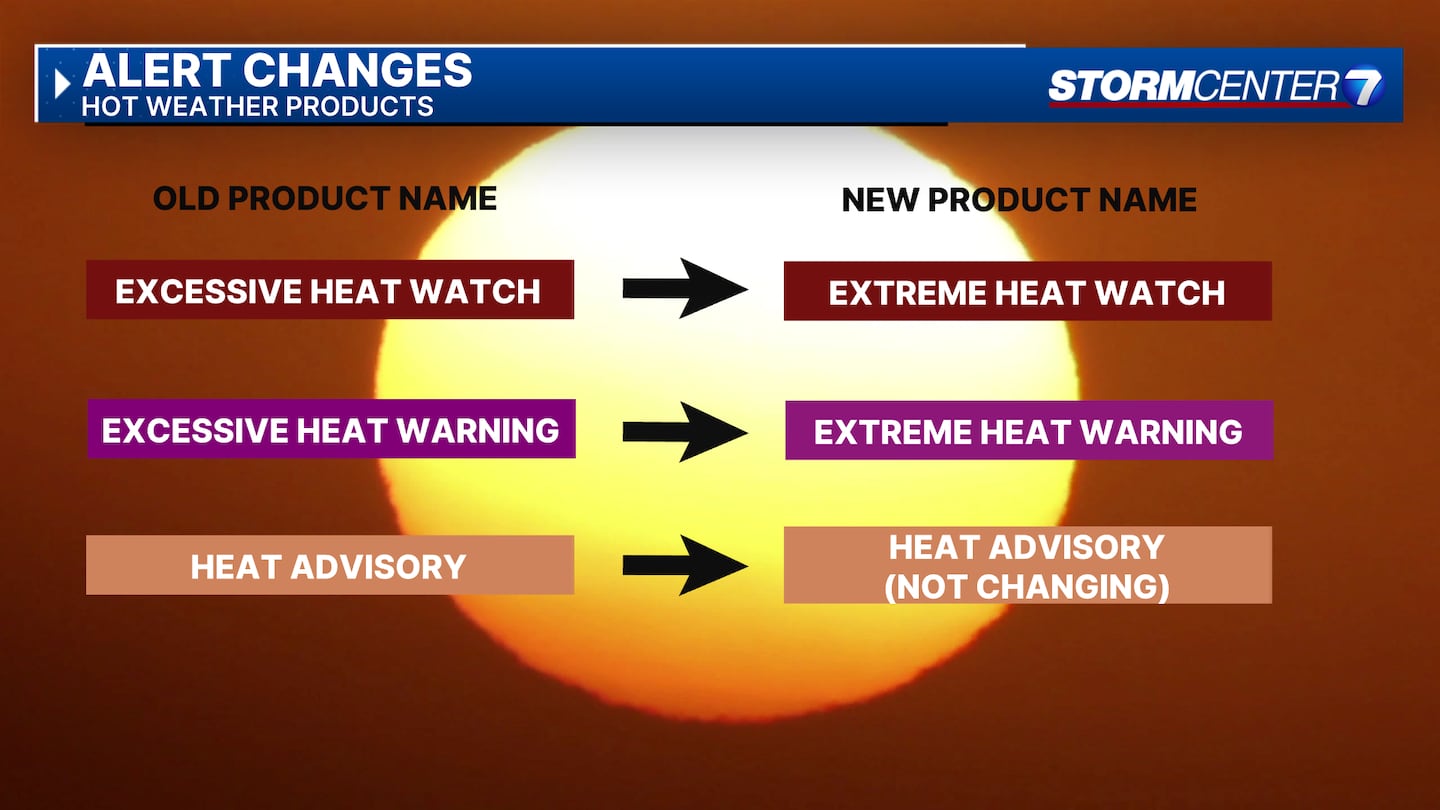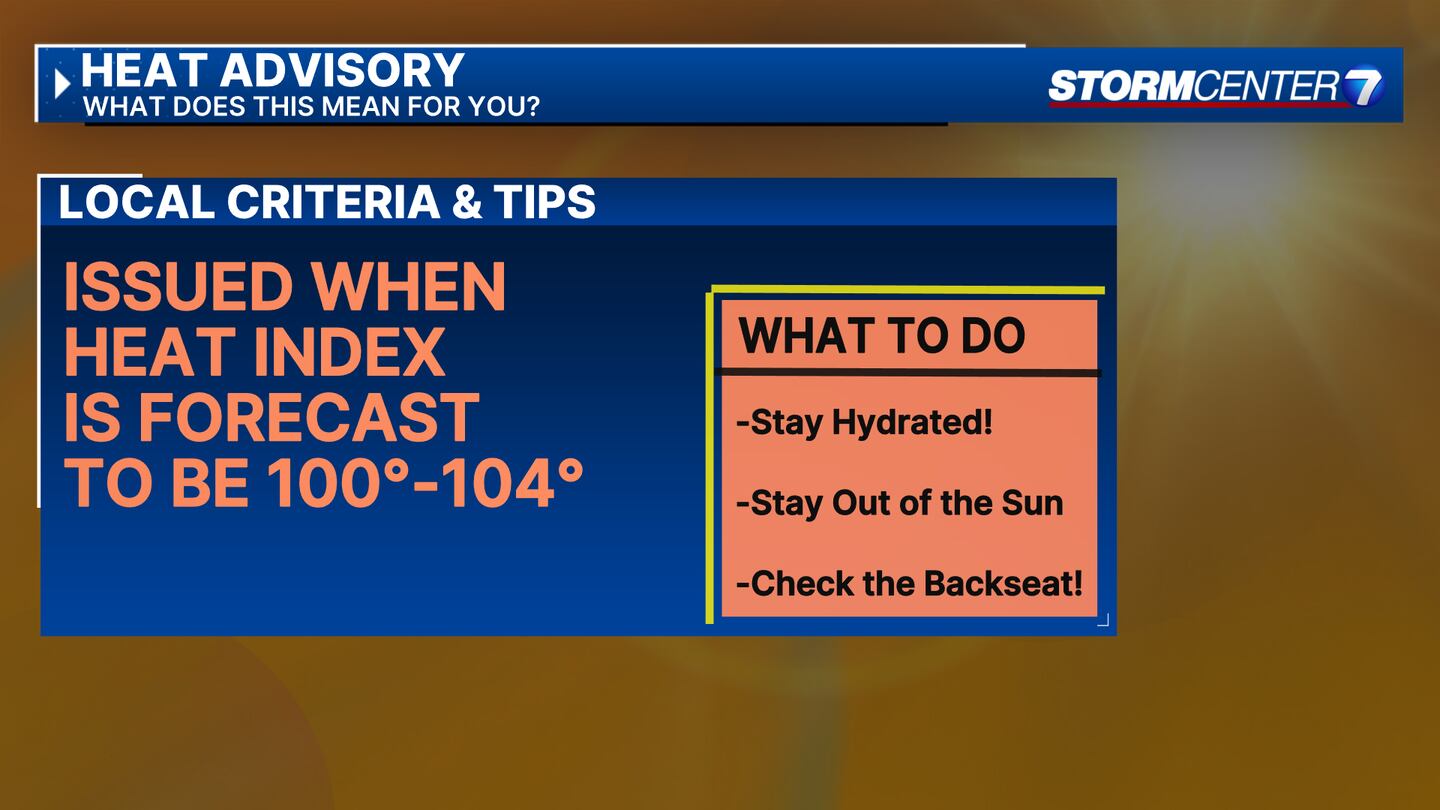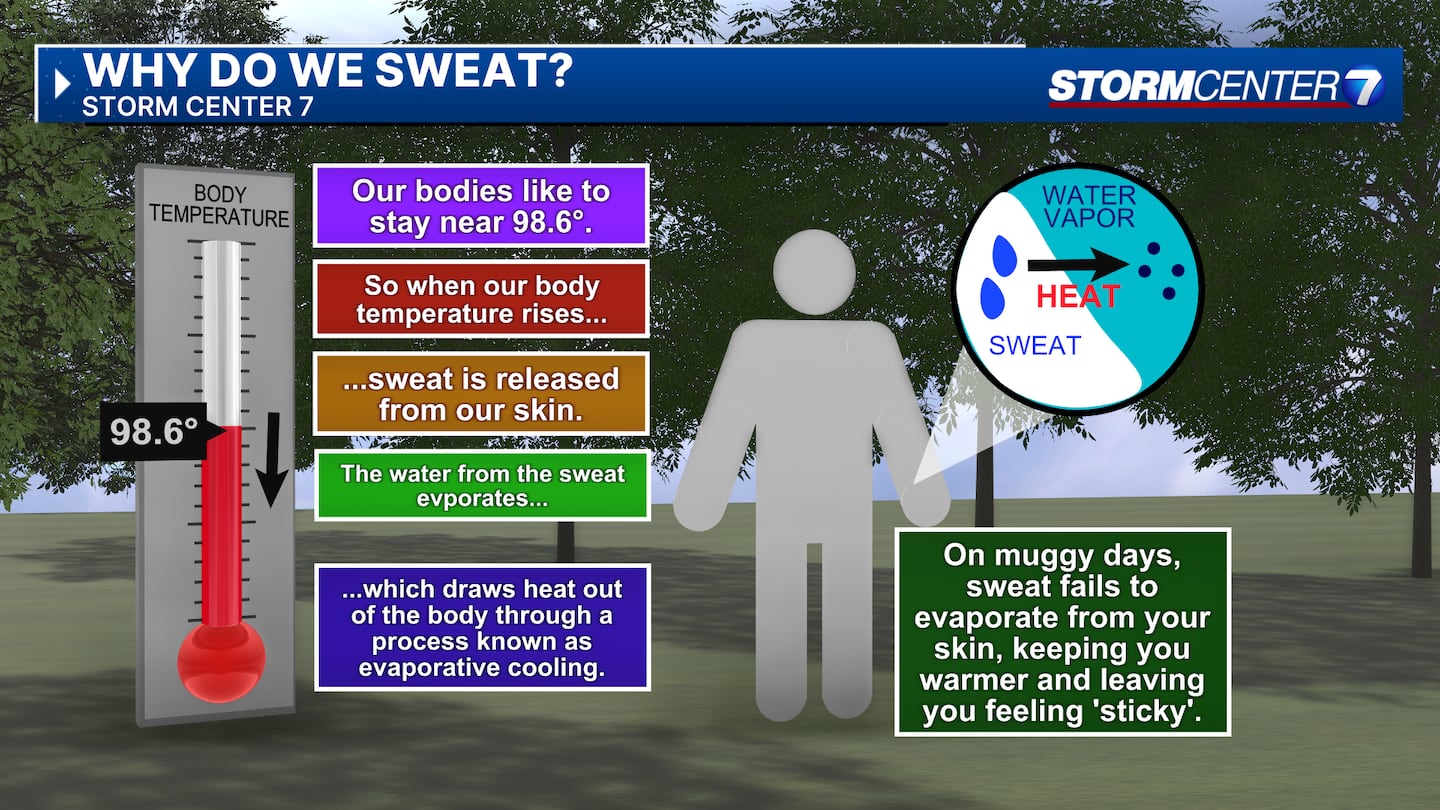DAYTON — Here is a bit of an explainer and/or breakout for when we see a Heat Advisory or Extreme Heat Watches and Warnings! We could see a Heat Advisory issued if current forecast trends verify.
[DOWNLOAD: Free WHIO-TV News app for alerts as news breaks]
TRENDING STORIES:
- Over 32K without power after severe weather moves through region
- Widespread damage reported after severe weather moves through Miami Valley
- Strong winds rip roof off Mercer County building
First, there are a couple of changes effective this summer regarding the heat alerts the National Weather Service will issue. In the past, we had Excessive Heat Watches or Warnings issued. Now, those names are being changed to Extreme Heat Watch and Extreme Heat Warning.
The alert called Heat Advisory is not changing. Why the change? The National Weather Service has been working on changes in the Hazard Simplification Project.
This is basically where the National Weather Service aims to trim back the number of products issued and to keep names a bit more similar between extremes in temperature to limit confusion with the public.
You may recall that this past winter, we had a Cold Weather Advisory and Extreme Cold Watch issued as part of the same project from the National Weather Service to simplify the cold weather alerting process.
[SIGN UP: WHIO-TV Daily Headlines Newsletter]
Now, as we look ahead to our hottest temperatures of the year, there is a chance we will see a heat advisory issued if forecast heat index values reach or exceed 100 degrees and stay below 104 degrees.
The Heat Advisory is a sign that long exposure to heat index values at that magnitude can cause heat stress symptoms to begin if precautions are not taken.
Heat exhaustion and heat stroke are very serious, and those start to have higher chances of occurring when the heat index climbs into the 100°+ range. Our bodies are working to maintain a constant temperature when exposed to the heat through sweating.
On humid days, sweat fails to evaporate from our skin, which leaves us warmer and the skin feeling “sticky.” It is important to practice all heat safety tips whenever possible if temperatures climb to dangerous levels, as we currently have in the forecast.
Those who spend high amounts of time outdoors will want to pay attention to the forecast in the coming days as we fine-tune any changes and see if any heat-related weather alerts are issued. Our WHIO Weather app will alert you if these alerts are issued!
©2025 Cox Media Group








